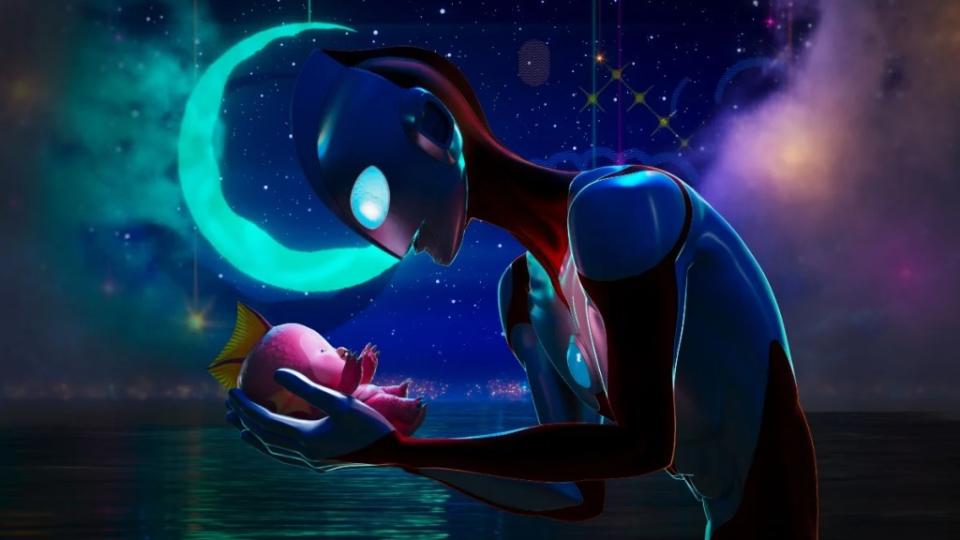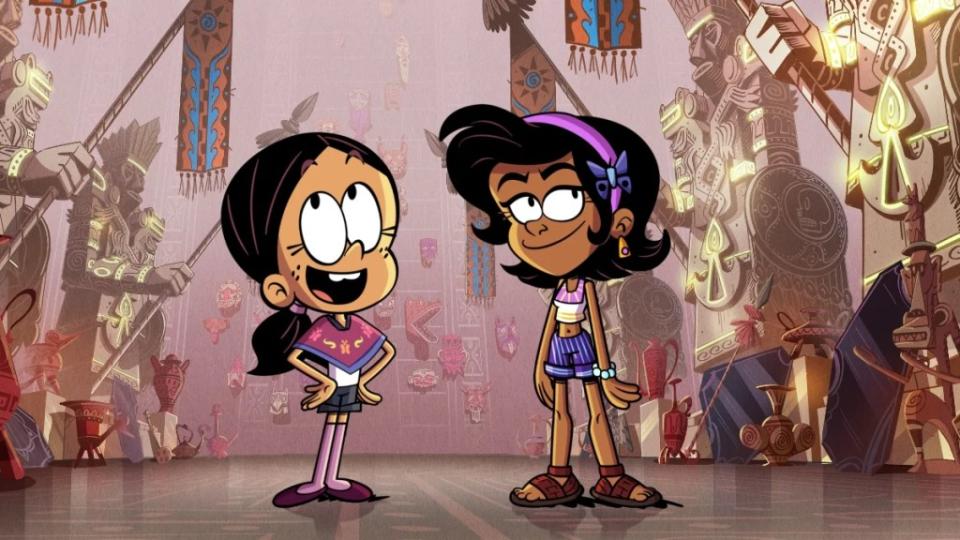How Netflix Became the Unlikely King of Feature Animation
Thanksgiving weekend featured an animation face-off between a titan of the industry, the 100-year-old Walt Disney Animation Studios, and a relative upstart, Netflix, which only started releasing its own animated features in 2019.
Disney’s holiday movie, “Wish,” was a musical extravaganza featuring the watercolor backgrounds of the studio’s past combined with cutting-edge CGI, while Netflix’s “Leo” was a more budget-conscious musical set in modern-day Florida.
It was a showdown of theatrical versus streaming, legacy studio versus blustery upstart, fairy tale versus contemporary storytelling. And the results were startling.
While “Wish” came in third at the box office with a disappointing $31.6 million, the Adam Sandler-starring “Leo” debuted to 34.6 million views (which is hours viewed divided by total runtime), according to Netflix, which in box office terms equaled a haul of around $500 million for its opening weekend, one insider with knowledge of the situation told TheWrap. “Leo” has been the #1 movie on Netflix for two weeks in a row.
The story of how Netflix became an animation powerhouse rivaling more established studios like Disney in just half a decade, charts back to its recruitment of top-tier talent — it poached its first two executives from DreamWorks Animation — and a willingness to work with outside studios on projects both recognizable and totally new to feed a consistent pipeline of new releases for Netflix subscribers.
“Netflix is becoming an animation powerhouse because they’ve spent the resources to hire the best available talent and give them the resources they need,” said an insider who has worked on an animated feature with the streaming giant.

Melissa Cobb, who previously oversaw the development of an Asian satellite studio at DreamWorks Animation, and Gregg Taylor, who also came from DreamWorks, established Netflix’s animation division in 2017. Cobb, who served as Netflix’s VP for Kids and Family Feature Animation, left the company in August of 2022 to become an independent producer of animated content. Taylor is a producer now too. (Karen Toliver took over the division last year.)
It took DreamWorks seven years to release its critical and commercial breakthrough, “Shrek.” But Cobb and Taylor’s team put out Netflix’s first original animated feature, “Klaus,” in about two years. It was directed by Sergio Pablos, a veteran of Walt Disney Feature Animation’s Paris outpost who made projects like “The Hunchback of Notre Dame” and “Treasure Planet.” Blending traditional animation and computer-generated imagery, “Klaus” went on to win seven Annie Awards and a BAFTA and was nominated for the Oscar for Best Animated Feature.
In the years that followed, Netflix released the directorial feature debut of legendary Disney animator Glen Keane (“Over the Moon”) and new animated features by Richard Linklater (“Apollo 10 ½: A Space Age Childhood”) and Henry Selick (“Wendell & Wild”). The streamer also smartly rescued films orphaned during the pandemic – “The Mitchells vs. the Machines” and “Vivo,” both from Sony Pictures Animation, were acquired and released on Netflix. And when Disney shut down Blue Sky, a division of 20th Century, and along with it the ambitious, LGBTQ+-themed “Nimona,” Annapurna and Netflix picked it up.
This year, Netflix won the Best Animated Feature Oscar for Guillermo del Toro’s visionary retelling of “Pinocchio.” And last week Out Magazine named “Nimona,” released this summer, the best film of 2023. “It will make your heart fly, your spirits rise, and it will leave you a better person than when you began,” the magazine wrote.
Outside partners and a diversity of styles
Netflix eschewed the “house style” of other animation studios (Illumination, Pixar and Disney all have their specific aesthetics), and instead released movies across a large spectrum of styles. The studio also partnered with outside companies like Ireland’s Cartoon Saloon (“My Father’s Dragon”), England’s Aardman Animation (“Shaun the Sheep: Farmageddon” and the upcoming “Chicken Run: Dawn of the Nugget”) and Locksmith (next year’s “That Christmas”) to beef up its quantity of new releases.
Last year, Netflix purchased Animal Logic, the animation studio behind “The LEGO Movie” and “Happy Feet,” giving the streamer an in-house studio for features developed internally (“Leo” was the second Netflix feature animated by Animal Logic).
The streamer has a deal with Nickelodeon, which will see several new “SpongeBob SquarePants” movies debut exclusively on Netflix, not Paramount+. And earlier this year, Netflix announced a partnership with Skydance Animation, the studio run by former Pixar bigwig John Lasseter. The first movie born out of the partnership, “Spellbound,” is expected in 2024.
To that point, 2024 will see Netflix continue to release films made by outside companies as its output dwarfs that of its closest competitors. While Disney, Pixar, DreamWorks Animation or Illumination only release one or two films a year owing to the painstaking process of making original animated features in-house, Netflix released four in 2023 and will roll out even more in 2024.
In addition to the aforementioned “Spellbound” and “SpongeBob” features, next year Netflix’s animation division also plans to release “Thelma the Unicorn,” based on a book by the same author of DreamWorks’ “The Bad Guys,” “Orion and the Dark,” a DreamWorks animated movie based on a script by Charlie Kaufman and “Ultraman: Rising,” based on the classic Tsuburaya Productions character (with animation from Industrial Light & Magic). 2024 will also see the release of “That Christmas” (written by Richard Curtis and animated by Locksmith) and “In Your Dreams” (produced by Taylor).
TheWrap can also exclusively reveal that in 2024 Netflix will release “The Casagrandes Movie,” based on the Nickelodeon animated series that ran from 2019 to 2022. Directed by Miguel Puga and written by Tony Gama-Lobo and Rebecca May, Lalo Alcaraz and Rosemary Contreras, the movie was produced by Nickelodeon Animation Studios Inc.

In addition to rolling out Netflix originals, the streamer has also become the go-to for consumption of licensed animation content. Several entries in the Netflix Top 10 are always animated features from other studios. Currently, “The Super Mario Bros. Movie” — produced by Universal, Illumination and Nintendo — is the #1 movie on the platform in America (as of this writing), and the Top 10 Kids Movies list is populated by the likes of Illumination’s “Sing 2” and “Minions” and DreamWorks’ “Trolls,” all of which semi-permanently live in the Top 10. And before launching its own streaming service in 2019, Disney would routinely license its animated features to Netflix.
According to the company’s own calculations, 60% of the 247 million Netflix households worldwide (nearly 150 million homes) watch Kids & Family content every month on Netflix. While that number includes non-animated Kids & Family content, the majority of it is animated features.
That impressive figure speaks to the ease of watching a new Netflix animated feature versus the cumbersome and expensive task of piling the kids into the minivan and buying concessions for everybody at a theater. It also makes re-watching the movies incredibly easy — it’s a balm (or bugaboo) for parents of kids who want to watch the same movie over and over again. “Leo” filmmakers Robert Marianetti and David Wachtenheim said the idea of kids being able to watch and re-watch the film was part of the appeal of making the movie at Netflix.
Even co-CEO Ted Sarandos, who had “only a passing interest” in the studio’s animated output as one filmmaker told TheWrap, is taking notice. On Dec. 4, when he was asked about content he felt was under-penetrated, he brought up animated features. “It adds a ton of value,” Sarandos said at UBS’ Global Media and Communication Conference. “There’s plenty of appetite for more than the few films a year that we’re currently doing.”
The Netflix chief executive added that the studio was planning to boost its animation output by “enhancing” its deal with Skydance “to put out a couple of other films per year starting next year.”
Animated duds lead to layoffs
While rapid, Netflix’s rise to the top of the animated heap has not been without friction.
Creative hang-ups led the studio last year to quietly cancel Pablos’ follow-up to “Klaus,” the hand-drawn animated feature “Ember.” Budget concerns also caused Netflix to halt production on Gore Verbinski’s “Cattywumpus,” an outer space jazz cat movie with animation by Industrial Light & Magic. (At the time, the word was that Verbinski was shopping the project around; it has yet to find a home.) In the wake of those problems, this fall the studio laid off one third of its feature animation unit during a corporate restructuring, Cartoon Brew reported.
According to a person with knowledge of the situation, the layoffs were intended to streamline the feature animation division to better succeed, with a formula that combines internally produced features — like Chris Williams’ follow-up to his hugely successful “The Sea Beast” (and an original feature whose logline is being kept under wraps) — with movies produced by the likes of Nickelodeon, Sony and Skydance.
“It’s been really good and [the relationship] has been very healthy,” Sam Fell, director of “Chicken Run: Dawn of the Nugget,” told TheWrap. “When Netflix came, they knew what they were getting into with Aardman – it’s a British film studio that makes specifically British films.”
Fell referred to the sometimes contentious relationship Aardman had with its American partners in the past. After being courted by Disney, Aardman’s first studio output deal was with DreamWorks Animation. While the relationship was at first fruitful — “Chicken Run” remains the highest grossing stop-motion animated feature of all time and “Wallace and Gromit: The Curse of the Were-Rabbit” won the Best Animated Feature Oscar — it soon soured when DreamWorks execs complained that the movies were “too British.” The output deal ended prematurely, but that doesn’t seem to be the case with Netflix and its far-reaching audience.
“The great thing is that Netflix is truly global,” Fell continued. “They understand that things can play globally and that things can find an audience across the planet.” He noted that the U.S. box office for Aardman films could be perceived as underwhelming, but the movies have a long shelf life after that initial theatrical run. That’s something that Netflix also understands: The streamer is releasing “Chicken Run: Dawn of the Nugget” 23 years after the original film came out in 2000.
And, like the relationships already established with Sony, DreamWorks and Skydance, the union of Aardman and Netflix will continue, including through a new Wallace & Gromit feature, likely due in 2025.
Instead of trying to beat its rivals with in-house productions that take years to complete, Netflix is ensuring its subscribers (and those subscribers’ children) are consistently satisfied.
If the beast has to be fed, it may as well be treated to a bountiful buffet prepared by a variety of artisans.
The post How Netflix Became the Unlikely King of Feature Animation appeared first on TheWrap.

